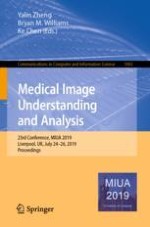2020 | OriginalPaper | Buchkapitel
Classification of Ten Skin Lesion Classes: Hierarchical KNN versus Deep Net
verfasst von : Robert B. Fisher, Jonathan Rees, Antoine Bertrand
Erschienen in: Medical Image Understanding and Analysis
Aktivieren Sie unsere intelligente Suche, um passende Fachinhalte oder Patente zu finden.
Wählen Sie Textabschnitte aus um mit Künstlicher Intelligenz passenden Patente zu finden. powered by
Markieren Sie Textabschnitte, um KI-gestützt weitere passende Inhalte zu finden. powered by
